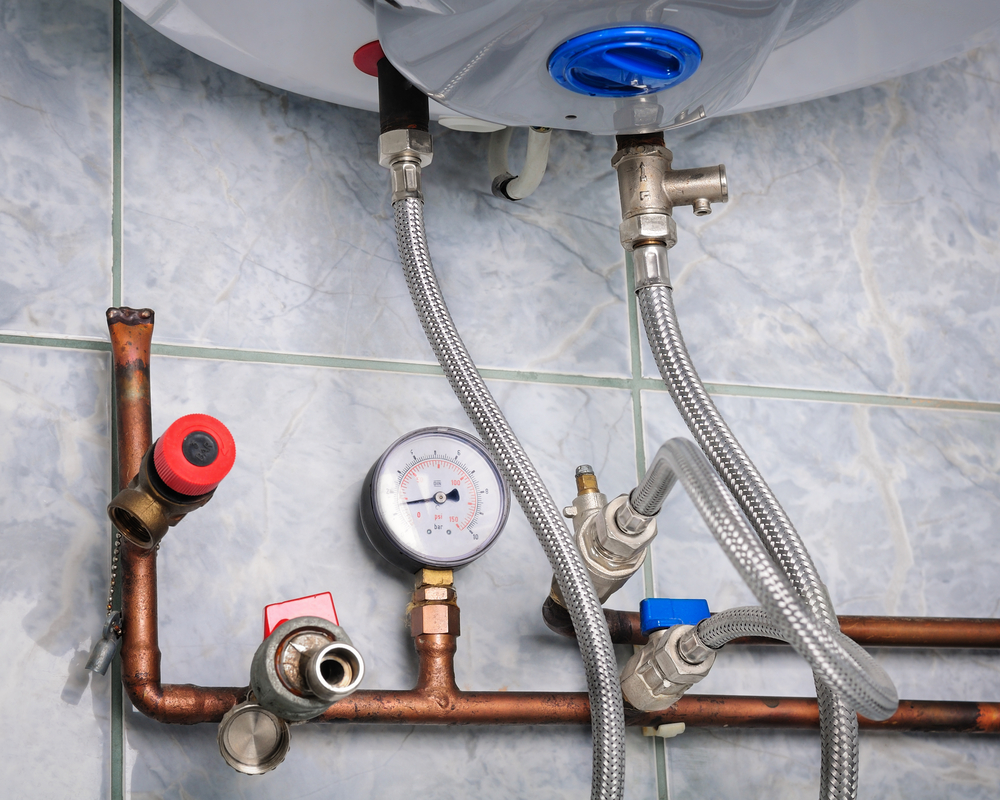My Guide to Addressing Low Water Pressure in Your Home
My Guide to Addressing Low Water Pressure in Your Home
Blog Article
Were you trying to find help around 4 Ways to Troubleshoot Low Water Pressure?

Low tide stress in your house can be a discouraging issue, impacting every little thing from showering to washing dishes. If you're experiencing weak water flow, there are a number of possible reasons and solutions to check out. In this overview, we'll talk about usual factors for low tide stress and practical actions to attend to the concern properly.
Intro to Low Water Pressure
Low water stress happens when the flow of water from your faucets, showers, and various other fixtures is weaker than typical. This can make daily jobs a lot more challenging and much less reliable. Recognizing the root causes of low water stress is essential to locating the right service.
Common Causes of Low Water Pressure
Pipeline Obstructions
In time, pipes can end up being obstructed with natural resource, debris, or debris, restricting the circulation of water. This is an usual issue in older homes with galvanized steel pipelines.
Deterioration
Deterioration within pipelines can bring about leakages and minimized water stress. Corrosion buildup can tighten water circulation, particularly in aging plumbing systems.
Faulty Pressure Regulators
Stress regulators are in charge of maintaining regular water pressure in your home. If they malfunction, it can result in low water pressure or unequal flow throughout the house.
Local Water System Issues
In some cases, the trouble lies outside your home. Municipal water system concerns, such as main line leakages or maintenance work, can momentarily minimize water pressure in your location.
Exactly How to Detect Low Tide Stress
Inspecting Taps and Fixtures
Start by testing the water stress at different taps and fixtures throughout your home. If the concern is isolated to certain areas, it might show local troubles.
Checking Pipelines
Inspect noticeable pipelines for signs of leakages, corrosion, or blockages. Focus on any type of uncommon noises, such as banging or rattling pipelines, which might suggest issues within the plumbing system.
Consulting with a Plumber
If you're not able to pinpoint the source of low tide stress, consider employing an expert plumber to conduct a comprehensive inspection. They can recognize underlying issues and advise appropriate services.
Do It Yourself Solutions to Deal With Low Water Stress
Cleaning Aerators and Showerheads
Mineral deposits can collect in aerators and showerheads, minimizing water flow. Remove and cleanse these parts on a regular basis to enhance water stress.
Flushing Water Heater
Debris buildup in the water heater can limit circulation and minimize effectiveness. Purging the container occasionally helps eliminate sediment and keep ideal performance.
Examining Stress Regulatory Authority
Make certain that the pressure regulator is working properly. Readjusting or replacing the regulator can assist bring back appropriate water stress throughout your home.
Cleaning Clogs in Piping
For small blockages, try utilizing a plumbing serpent or chemical drain cleaner to clear obstructions in pipes. Be cautious when using chemicals and follow security guidelines.
When to Call a Professional Plumber
If DIY efforts stop working to deal with the problem or if you think substantial plumbing troubles, it's ideal to look for support from a certified plumber. They have the proficiency and tools to resolve complicated problems safely and efficiently.
Safety Nets to Maintain Water Pressure
Routine Upkeep
Arrange regular upkeep for your plumbing system to stop problems such as deterioration, leaks, and obstructions. Attending to small problems early can help stay clear of more substantial repair services later on.
Setting Up a Pressure Booster
Think about setting up a stress booster pump to enhance water pressure in locations with consistently low circulation. This can be specifically valuable for multi-story homes or residential properties with high-demand fixtures.
Monitoring Water Use
Be mindful of water usage routines and stay clear of overtaxing the plumbing system. Straightforward modifications, such as staggering showers and laundry tons, can aid maintain adequate water stress.
Conclusion
Dealing with low tide pressure can be frustrating, but identifying the underlying causes and applying ideal remedies can recover optimum flow throughout your home. Whether it's cleansing aerators, examining pipelines, or seeking advice from a plumber, taking proactive steps can ensure a stable supply of water for your everyday requirements.
FOUR WAYS TO FIX LOW WATER PRESSURE NOW
Turning on a shower or faucet only to find the water comes out in a sad, slow drizzle is never a good feeling. How exactly are you supposed to wash a pan or take a quick shower when it takes 10 minutes just to rinse off a little soap? The good news is that when your water pressure is bad, there's always a cause: typically one that can be easily fixed. Here are some of the most common causes of low pressure and what you can do to fix the issue:
DEBRIS AND MINERAL DEPOSIT BUILDUPS
If you notice low water pressure from just one or two of the fixtures in your house, the problem likely has to do with debris buildup. Water is full of minerals and other debris, all of which can accumulate in your pipes and on your fixtures. This can cause a blockage that affects how much water flows through. To fix this, try filling a small plastic bag with white vinegar, and use a rubber band to hang it around your showerhead or faucet. Let the head of the fixture soak for a few hours, and the vinegar should loosen the deposits.
WATER LEAKS
Leaks are another common cause of low water pressure. If water is flowing out of your plumbing through a hole or crack before it can reach your fixture, the pressure coming out of the faucet or showerhead will be lower. A plumbing professional is your best bet for finding and repairing a leak in your water supply pipes.
Leaks are another common cause of low water pressure. If water is flowing out of your plumbing through a hole or crack before it can reach your fixture, the pressure coming out of the faucet or showerhead will be lower. A plumbing professional is your best bet for finding and repairing a leak in your water supply pipes.
FOUR WAYS TO FIX LOW WATER PRESSURE NOW
Turning on a shower or faucet only to find the water comes out in a sad, slow drizzle is never a good feeling. How exactly are you supposed to wash a pan or take a quick shower when it takes 10 minutes just to rinse off a little soap? The good news is that when your water pressure is bad, there's always a cause: typically one that can be easily fixed. Here are some of the most common causes of low pressure and what you can do to fix the issue:
DEBRIS AND MINERAL DEPOSIT BUILDUPS
If you notice low water pressure from just one or two of the fixtures in your house, the problem likely has to do with debris buildup. Water is full of minerals and other debris, all of which can accumulate in your pipes and on your fixtures. This can cause a blockage that affects how much water flows through. To fix this, try filling a small plastic bag with white vinegar, and use a rubber band to hang it around your showerhead or faucet. Let the head of the fixture soak for a few hours, and the vinegar should loosen the deposits.
WATER LEAKS
Leaks are another common cause of low water pressure. If water is flowing out of your plumbing through a hole or crack before it can reach your fixture, the pressure coming out of the faucet or showerhead will be lower. A plumbing professional is your best bet for finding and repairing a leak in your water supply pipes.
Leaks are another common cause of low water pressure. If water is flowing out of your plumbing through a hole or crack before it can reach your fixture, the pressure coming out of the faucet or showerhead will be lower. A plumbing professional is your best bet for finding and repairing a leak in your water supply pipes.
A VALVE ISSUE
If you have low water pressure throughout your home, check your main shut-off valve to make sure it's completely open. You may also want to see if there's a pressure-reducing valve installed. If there is, have a plumber help you adjust the settings to get the pressure you're looking for.
OTHERS USING WATER
Believe it or not, your low water pressure could be caused by your neighbors. If you notice low pressure at certain times of day, it may be because you and the people living next to you have similar schedules - when everyone is showering at the same time, the pressure will be lower in every home. Low pressure throughout the neighborhood may also be caused by an issue with your municipal water supply. If that's the case, call the supplier to see if they're working on the issue.
https://www.rotorooter.com/blog/water-leaking/low-water-pressure-fixes/

I am just very enthusiastic about and I am hoping you enjoyed reading my piece. Make sure you take a moment to promote this blog if you appreciated it. I praise you for being here. Please pay a visit to our blog back soon.
Call Today Report this page